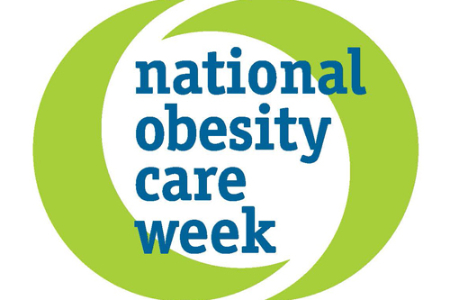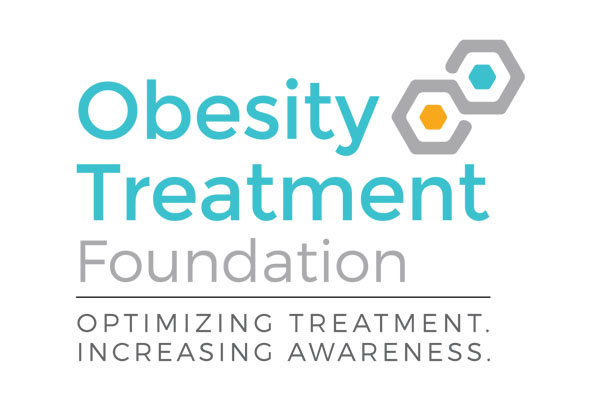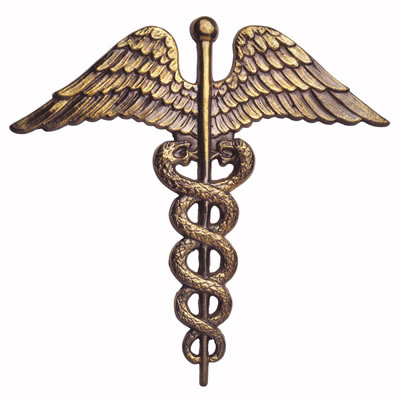
Obesity Care Week: Now through Nov. 7
Thirty-five obesity-related organizations are working together this week in support of National Obesity Care Week, a movement to ensure anyone affected by obesity receives respectful and comprehensive care. You too can support Obesity Care Week and take advantage of plentiful resources to help you and your colleagues treat obesity seriously: - View the press release.
- Take the pledge to treat obesity seriously.
- Join the campaign.
- Follow Obesity Care Week on Twitter, Facebook, and LinkedIn.
- Use #obesitycareweek when you post on social media.
|
 Going to ObesityWeek? Stop by to see us
ObesityWeek is the joint meeting of the American Society for Metabolic and Bariatric Surgery (ASMBS) and The Obesity Society (TOS). If you're attending ObesityWeek, don't forget to come by and see us at booth #1013 in the exhibit hall. At the booth, experts from OMA will answer your questions about the clinical management of obesity, talk with you about the four pillars of the comprehensive treatment approach, and let you know about upcoming educational opportunities. OMA is also hosting a level 2 partner symposium you won't want to miss. Attend our session tomorrow at 10:15 a.m., titled " Want to Optimize Bariatric Surgery Results? Time to Consult an Obesity Medicine Specialist," to learn how comprehensive treatment can help patients maintain post-operative weight loss long term. |
Obesity Treatment Foundation
|

Obesity Treatment Foundation debuts new logo
You may have spotted the Obesity Treatment Foundation's (OTF's) new logo at the recent Overcoming Obesity 2015 conference, where it was revealed after OMA's brand unveiling. The foundation logo has similar features to the OMA logo, which ties the two organizations together as partners in obesity medicine education and research. Keep up with updates from the foundation by liking OTF on Facebook and following OTF on LinkedIn. |
 The Obesity Treatment Foundation helps keep you up to date on current obesity research. Each week, OTF publishes a brief overview of three recent studies so you can be in the know, even during your busiest days. Click the links below to view the full articles, and consider supporting OTF, so we can continue to provide you with updates. The Obesity Treatment Foundation helps keep you up to date on current obesity research. Each week, OTF publishes a brief overview of three recent studies so you can be in the know, even during your busiest days. Click the links below to view the full articles, and consider supporting OTF, so we can continue to provide you with updates. |
High-intensity interval training versus moderate-intensity training for improving cardiometabolic health in males with overweight or obesity: A randomized, controlled trial
Fisher, G., et al. PLoS One, 2015.
The effects of six weeks of high-intensity interval training (HIIT) versus continuous moderate-intensity training (MIT) was examined for improving body composition, insulin sensitivity (SI), blood pressure, blood lipids, and cardiovascular fitness. Twenty-eight sedentary men with overweight or obesity were assigned to either the HIIT or MIT group. The HIIT protocol consisted of four minutes of cycling at 15 percent max anaerobic power (AP) followed by 30 seconds at 85 percent max AP. This was repeated four times each session, and participants completed this protocol three days per week. MIT consisted of 45-60 minutes of continuous cycling at 55-65 percent of VO2peak, an indicator of cardiorespiratory fitness. This was performed 5 days per week. The MIT group had a greater improvement in VO2peak compared to HIIT (11.1 percent versus 2.83 percent, P = 0.0185). Both exercise conditions were associated with improvements in percent body fat, total cholesterol, medium very low-density lipoprotein, medium high-density lipoprotein, triglycerides, SI, and VO2peak. These findings suggest that both HIIT and MIT result in a number of metabolic improvements, with potentially greater improvement in overall fitness level with MIT that is longer in duration and more frequently done. View article
|
Epigenetics and human obesity
van Dijk, S. J., et al. Int'l J Obesity, 2015.
Epigenetics refers to cellular and physiological trait variations that are caused by external or environmental factors that switch genes on and off. This affects how cells read genes, which is different from changes in the DNA sequence. This review article discusses recent technological advances in epigenomic profiling and the role of the epigenome in obesity. The first potential epigenetic markers for obesity that could be detected at birth have been identified. These findings may aid in predicting risk for obesity at a young age, which can help with targeted prevention strategies. View article
|
Energy balance measurement: When something is not better than nothing
Dhurandhar, N. V., et al. Int'l J Obesity, 2015.
Energy intake (EI) and physical activity energy expenditure (PAEE) have historically been assessed by self-reporting. A number of studies have shown that self-reported EI and PAEE are significantly inaccurate. This article makes the case for moving beyond self-reported data and implementing objective measures of EI and PAEE. In clinical practice, relying on self-reported dietary and exercise behaviors may not be an optimal way to assess patient behavior; other measures should be considered to improve the accuracy of EI and PAEE estimates. View article
|
|
|
*These events are hosted by organizations other than OMA. Contact the organization directly for details.
|
|
Answered by Dr. Ethan Lazarus
Q: Do you recommend Stevia for your patients?
A: No. I recommend getting rid of as much sweet stuff as possible to acclimate the palate to fewer sweet foods.
|
|
Executive Director
Sponsorships and Exhibits Manager
Operations Manager
Education Coordinator
Communication Manager
Executive Director of the Obesity Treatment Foundation
|
|
101 University Blvd., Suite 330
Denver, CO 80206
|
|
|